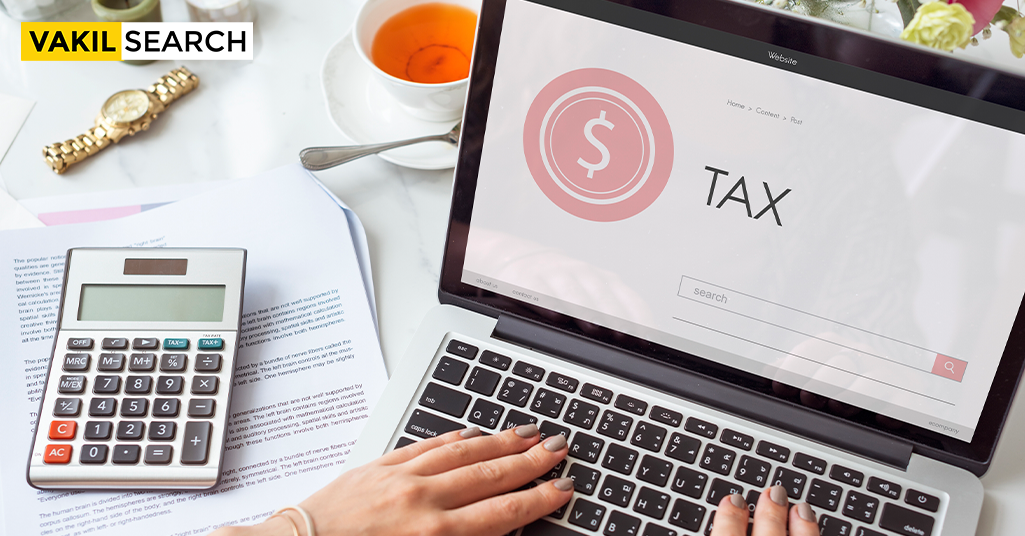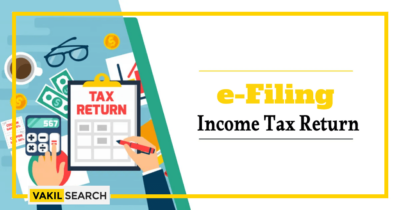In this article we will discuss the various types of ITR forms and what they are for.
The Central Board of Direct Taxation (CBDT) has announced a new update from the Income Tax Return Forms (ITR-1 to ITR-7) for the assessment year 2021-22. It was notified by the Ministry of finance in a release on 1 April 2021. ‘In view of the ongoing COVID-19 crisis and to promote the people paying tax, no important change has been done to the ITR forms with the last year’s ITR forms’, the CBDT said. Only the simple minimum changes required due to amendments in the Income Tax Act, of 1961 have been made, the CBDT further added.
ITR forms, or Income Tax Return forms, are official documents prescribed by the Income Tax Department for filing tax returns. These forms vary based on the nature and sources of income. Choosing the correct ITR form is crucial for accurate and compliant filing. These forms capture essential financial details, ensuring taxpayers fulfill their obligations transparently. Staying informed about the appropriate ITR form is essential for a seamless tax return filing experience and avoiding potential legal complexities.
Benefits of Filing Income Tax Returns (ITR Forms) on Time
Here are some of the benefits of filing your returns on time
- Hassle free loan processing – Most companies will ask you for your recent ITR before issuing a loan.
- Refund of TDS – If the amount of your tax liability is lesser than the amount of TDS deducted from your income for the year, then you can claim a refund by filing your ITR.
- VISA processing – Just like with loans, when you apply for a VISA you have to show your income tax return to prove that you are a citizen of with a means of livelihood in the country and hence are not likely to abscond after reaching the foreign destination
- Carry forward of losses – Only if you file your ITR can you carry forward your losses to the next year and use it as a deduction against taxable income.
Who Can File ITR-1 Form?
The ITR-1 (Sahaj) is for residents holding a total income of up to ₹50 lakh from their salaries. It could be single ownership, family pension income, interest income, etc.
Who Cannot File ITR-1 Sahaj?
Taxpayers whose salaries are more than ₹50 lakhs cannot fill out this form. Non-residents and RNOR (Residents Not Ordinarily Resident) are not eligible to file ITR-1. People with two or more residential properties are not eligible. Taxpayers possessing income under professional or business head are also not eligible to file ITR-1.
Who Can File ITR-4 Sugam?
ITR-4 Sugam is for HUFs, individuals, and firms (except limited liability partnerships) being residents with a total income of up to ₹50 lakh; having income from a business, one residential property (single ownership); and a profession which has a measure under sections 44AD, 44ADA, or 44AE, or income from interest, family allowance, etc. and agricultural or farm income up to ₹5,000.
Who Cannot File ITR-4 Sugam?
An individual owning residential property, income from salary, or other sources above ₹50 lakhs cannot utilise this form to file ITR. Moreover, an individual who is a director in a company and has invested in unlisted equity shares cannot use this form.
Who Can File ITR-2 and ITR-3?
HUFs (Hindu Undivided Families) and individuals not receiving an income from a trade or profession or business (and are not eligible for filing Sahaj ITR-1) can file ITR-2. Further, those having income from their profession or business can file ITR Form 3.
Who Can File ITR Form 5?
‘Persons other than a self-individual, HUF and firms i.e. partnership firm, Limited Liability Partnerships (LLP) etc. can file ITR Form 5. Moreover, companies or firms can file ITR Form 6. Political parties, trusts, charitable organisations etc. requiring exempt income under the Act can file ITR-7’, the report noted.
Where Can Individuals Download the Various ITR Forms?
- Step 1: ITR forms can be downloaded from the official website https://www.incometaxindia.gov.in/pages/downloads/income-tax-return.aspx
- Step 2: The forms are available in PDF format
- Step 3: Instructions for filling out the forms are provided on the same website
- Step 4: Depending on their income type, individuals can choose from ITR-1, ITR-2, ITR-3, ITR-4, or ITR-7
- Step 5: Income Tax Returns can be filed on the official website of the Income Tax Department: https://www.incometaxindiaefiling.gov.in/home
- Step 6: The process for filing returns is straightforward.
How Can I Download the ITR Form Utility Online?
The following are the steps to download the ITR form utility online:
- Step 1: Visit the official website of the Income Tax department of India
- Step 2: Click on ‘Downloads’
- Step 3: Select the specific assessment year
- Step 4: Click on ‘Common Offline Utility (ITR 1 to ITR 4)’ option
- Step 5: To download the excel file for desired ITR, click on ‘Utility Excel Based’
What Are the Key Changes Notified in the New ITR Forms for Fy 2022-23 (Ay 2023-24)?
Here are some of the significant changes in the new ITR forms for the financial year 2022-23 (assessment year 2023-24): Unchanged eligibility criteria for ITR-1, but restrictions have been introduced:
Intraday Trading Reporting
New sections for income from intraday trading and turnover have been added under the ‘Trading Account’ section in ITR3, ITR5, or ITR6.
Reporting of Opting Out of the Old and New Tax Regime
If a taxpayer has switched tax regimes in the previous assessment year, it must be reported in ITR-3 and OTR-4 forms.
Additional Disclosure for Foreign Investors
Foreign institutional investors (FII/FPI) must provide their SEBI registration number as an additional disclosure.
Balance Sheet Reporting
In the ‘Advances’ section under the Source of Funds, income received from individuals through advances specified in Section 40A(2)(b) of the Income Tax Act should be reported.
New Section for Virtual Digital Assets (VDA)
- Income from Virtual Digital Assets (VDA), including cryptocurrencies, should be reported in a new schedule under capital gains
- Taxpayers must report the date of transfer, date of acquisition, cost of acquisition, and proceeds from the sale of VDAs
- A quarterly breakup is required under the Capital Gains Schedule for Income from VDA.
Conclusion
The notified ITR Forms are available on the official website. There is no difference in the manner of filing of ITR Forms as compared to last year, the tax body specified.
This year’s ITR forms do not have any significant variations. As we sorely need them to have because there need to be some possible changes so as to allow taxpayers to find it easy to comply with and report data consistently.
Besides the decision between the regimes, taxpayers need to report regularly on the dividend income received in FY 2021-22 in order to observe advance tax provisions related to how the advance tax is estimated and returned on capital gains.
This year will be very important for all single taxpayers. This is the first time that taxpayers will have the opportunity to choose an additional beneficial tax regime.
Frequently Asked Questions
ITR forms are used to file your income tax return with the government. They help the government to assess your taxable income and collect taxes accordingly.
The ITR form you need to use depends on your income sources and deductions. There are four types of Income Tax Return (ITR) forms, each designed for specific income groups and sources: ITR-1 is for salaried individuals and pensioners with an income of up to ₹50 lakhs from salary and pension, as well as income from other sources up to ₹50,000 ITR-2 is for those with income from house property, capital gains, or business or profession ITR-3 is tailored for businessmen and professionals with a total income of up to ₹50 lakhs ITR-4 is intended for salaried individuals and pensioners whose income is solely from salary and pension, and other sources up to ₹50,000.
Yes, salaried employees can use ITR-1 for filing their income tax returns if they meet the eligibility criteria mentioned above.
ITR-1 is a simplified form that can be used by salaried individuals and pensioners with limited income sources and deductions. ITR-2 is a more comprehensive form that can be used by individuals with income from house property, capital gains, or business or profession
ITR-3 can be filed by businessmen and professionals with a total income of up to ₹50 lakhs. ITR-4 can be filed by salaried individuals and pensioners with income from salary and pension only, and income from other sources up to ₹50,000.
No, self-employed individuals cannot use ITR-1 for filing their income tax returns. They need to use ITR-3 or ITR-4, depending on their income sources and deductions
Form 16 is a certificate issued by your employer that shows your salary and tax deducted at source (TDS). Form 26AS is a consolidated statement of all TDS deducted on your behalf and deposited with the government. Both forms are important for income tax filing as they help you to pre-fill your income tax return and ensure that all the taxes have been paid correctly.
Yes, there are a number of exemptions and deductions available in different ITR forms. Some of the common exemptions and deductions include: House rent allowance (HRA) Leave travel allowance (LTA) Medical expenses Education expenses Donations to charity Investments in tax-saving schemes such as ELSS funds and PPF
Yes, you can change the ITR form you used in the previous year for your current income tax return. However, you should note that you can only change the ITR form if you are eligible to use the new ITR form.
To claim deductions such as 80C in your income tax return, you need to provide the necessary documentation to support your claims. For example, to claim a deduction for investments in ELSS funds, you need to provide your investment statement. What is the purpose of ITR forms?
How do I determine which ITR form to use for filing my income tax return?
Can salaried employees use ITR-1 for filing their income tax returns?
What are the key differences between ITR-1 and ITR-2 forms?
Who is eligible to file ITR-3 and ITR-4 forms?
Can self-employed individuals use ITR-1 for filing their income tax returns?
What is the significance of Form 16 and Form 26AS in income tax filing?
Are there any exemptions or deductions available in different ITR forms?
Can I change the ITR form I used in the previous year for my current income tax return?
How do I claim deductions such as 80C in my income tax return?
Also, Read:










